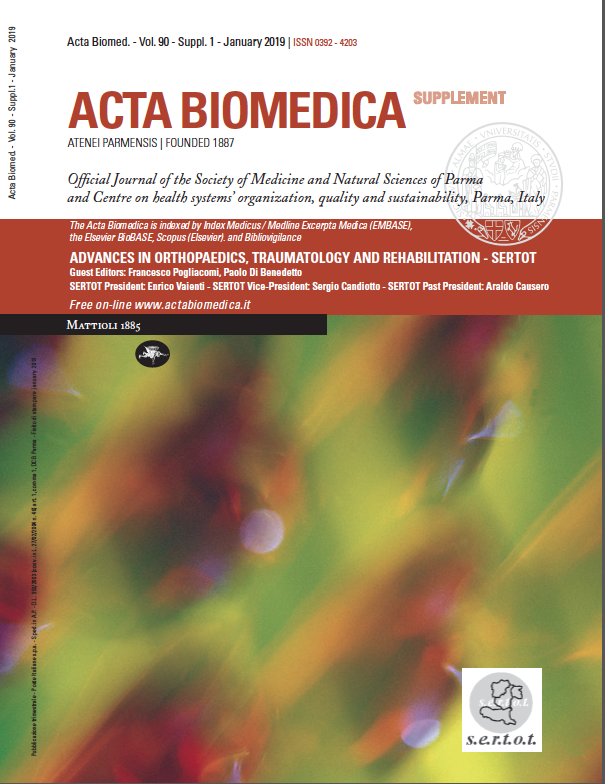Outcome of cages in revision arthroplasty of the acetabulum: a systematic review
Keywords:
revision arthroplasty, acetabulum,, cage,, reinforcement ring, acetabular bone defect, acetabular revision outcomesAbstract
Background and aim of the work: To investigate the clinical, radiological and functional outcomes of acetabular revisions with acetabular reinforcement rings and cages. Methods: A comprehensive literature study of international databases was performed. Inclusion criteria were cementless revisions, use of reinforcement rings, radiological and clinical follow-up, availability of full text in English, publication between January 1990 and July 2018. In a second further analysis, we selected only studies describing patients with more severe acetabular defects (AAOS 3, AAOS 4, Paprosky III). Data extracted included mean follow-up period, radiographic follow-up, functional scores, implant failures and survival rate. Results: We included in our review 1327 acetabular revisions described in 28 articles. The most commonly used reinforcement rings were Burch-Schneider ring, the Muller ring and the Ganz ring. Mean follow-up for all patients together was 8.8 years. Clinical or radiological signs of loosening were reported in 191 patients, 83 patients needed further acetabular revision for aseptic loosening and 41 patients received additional surgeries for septic loosening. The mean value of the Harris Hip Score reported at the last follow-up was 76.3. Nineteen articles fulfilled the criteria for further analysis about high-grade acetabular bone defects. We analyzed 649 revisions with mean follow-up period of 8.2 years. Clinical or radiological loosening was reported in 90 patients, additional acetabular revision was performed in 39 patients and 25 patients needed further surgeries for deep infection. Conclusion: Acetabular revisions with cages are characterized by good survival rates and functional scores with a mean follow-up period of 8 years.
Downloads
Published
Issue
Section
License
This is an Open Access article distributed under the terms of the Creative Commons Attribution License (https://creativecommons.org/licenses/by-nc/4.0) which permits unrestricted use, distribution, and reproduction in any medium, provided the original work is properly cited.
Transfer of Copyright and Permission to Reproduce Parts of Published Papers.
Authors retain the copyright for their published work. No formal permission will be required to reproduce parts (tables or illustrations) of published papers, provided the source is quoted appropriately and reproduction has no commercial intent. Reproductions with commercial intent will require written permission and payment of royalties.







